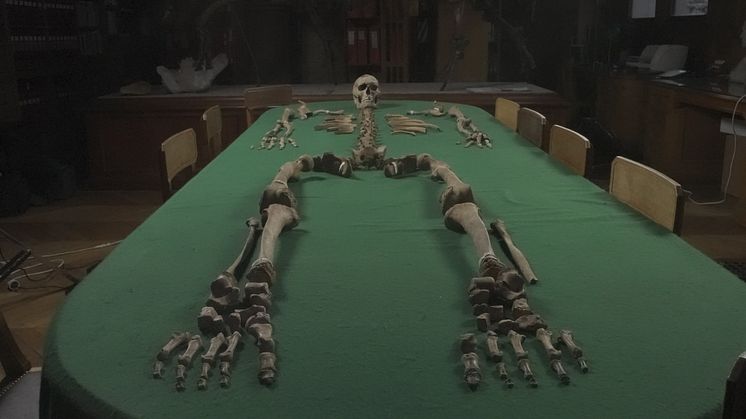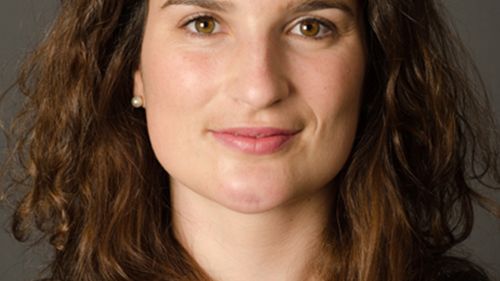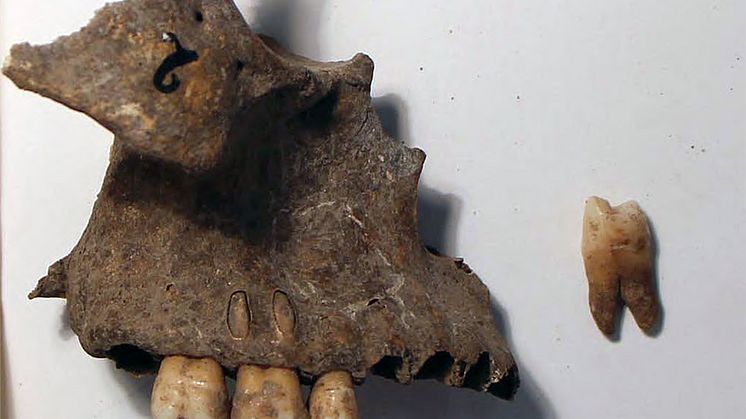
Press release -
Stone Age strategy for avoiding inbreeding
Blood relations and kinship were not all-important for the way hunter-gatherer communities lived during the Stone Age in Western Europe. A new genetic study, conducted at several well-known French Stone Age burial sites, shows that several distinct families lived together. This was probably a deliberate system for avoiding inbreeding.
Peer-review /Data/statistical analysis / People
These findings are revealed in a new scholarly study led by researchers from Uppsala University in collaboration with several French institutions. The study is published in the journal PNAS.
In the study, the researchers have succeeded in obtaining biomolecular data from human skeletons buried at iconic sites in France, such as Téviec and Hoedic in Brittany, as well as Champigny. The remains were dated to the very last stages of the Mesolithic (approximately 6,700 years ago), when the last Western European hunter-gatherers lived, overlapping with the Neolithic, when settled farmers took over.
This is the first study analysing the genome of several Stone Age hunter-gatherers from the same place who lived at the same time as and in the proximity of newly arrived Neolithic farming communities.
“This gives a new picture of the last Stone Age hunter-gatherer populations in Western Europe. Our study provides a unique opportunity to analyse these groups and their social dynamics,” says Professor Mattias Jakobsson from Uppsala University, who led the study.
Some 7,500 years ago, the last hunter-gatherer populations in Western Europe encountered incoming Neolithic farmers and were gradually replaced and assimilated. The coexistence of these groups has raised many questions about the extent to which they interacted.
Earlier studies, based on isotope data, have suggested that the last hunter-gatherer communities deliberately assimilated women from the Neolithic farming community. This new study shows instead that the hunter-gatherer groups mixed with other hunter-gatherer groups but not with the Neolithic farmers.
“Our genomic analyses show that although these groups were made up of few individuals, they were generally not closely related. Furthermore, there were no signs of inbreeding. However, we know that there were distinct social units – with different dietary habits – and a pattern of groups emerges that was probably part of a strategy to avoid inbreeding,” says Luciana G. Simões, researcher at Uppsala University and first author of the study.
The research has been conducted in collaboration with researchers at several French institutions, including the University of Rennes in Brittany and the Muséum national d’Histoire naturelle (MNHN) in Paris.
The well-known sites of Téviec and Hoedic in southern Brittany contain many graves where several individuals have been buried together. This is unusual at Mesolithic burial sites. It was previously assumed that being buried together meant individuals were biologically related.
“Our results show that in many cases – even in the case of women and children in the same grave – the individuals were not related. This suggests that there were strong social bonds that had nothing to do with biological kinship and that these relationships remained important even after death,” says Dr Amélie Vialet from the Muséum national d’Histoire naturelle.
Simões LG, et al.; Genomic ancestry and social dynamics of the last hunter-gatherers of Atlantic France. Proc Natl Acad Sci U S A. 2024 Mar 5;121(10):e2310545121. doi: 10.1073/pnas.2310545121. Epub 2024 Feb 26. PMID: 38408241.
Dr. Luciana Gaspar Simões, geneticist, postdoc at the Department of Organismal Biology, Uppsala University, luciana.simoes@ebc.uu.se, tel: +46-76-172 52 79 (English, Swedish, Portuguese)
Professor Mattias Jakobsson, Department of Organismal Biology, Uppsala University, mattias.jakobsson@ebc.uu.se, tel: +46-70-167 97 57 (Swedish, English)
Related links
Topics
Categories
Founded in 1477, Uppsala University is the oldest university in Sweden. With more than 50,000 students and 7,500 employees in Uppsala and Visby, we are a broad university with research in social sciences, humanities, technology, natural sciences, medicine and pharmacology. Our mission is to conduct education and research of the highest quality and relevance to society on a long-term basis. Uppsala University is regularly ranked among the world’s top universities. www.uu.se





